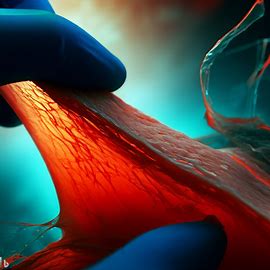We are excited to announce that Lewis Gaffney’s Paper “Extracellular Matrix Hydrogels Promote Expression of Muscle-Tendon Junction Proteins.” This paper was published in collaboration with Matt Fisher’s lab.
In this study we aimed to understand how muscle and tendon specific extracellular matrix hydrogels could promote muscle-tendon junction like proteins in muscle and tendon cells. Using a unique model to study the multi-tissue components, we broke down how specific micro-environments could affect individual cell types at the junction. Overall, there was increased protein expression of Paxillin and Type XXII Collagen (both specific MTJ proteins) when muscle and tendon cells were cultured in the tissue specific ECM hydrogels compared to Type I Collagen Hydrogels.
Congrats to all of the Authors!
Citation: Tissue Engineering Part A.Mar 2022.270-282.http://doi.org/10.1089/ten.tea.2021.0070
https://www.liebertpub.com/doi/full/10.1089/ten.tea.2021.0070

FIG. 1. ECM interactions and paxillin expression at the MTJ. (A) Graphical description of ECM–cell interactions at the MTJ. Where muscle and tendon meet, cells within one tissue interact with ECM of the other tissue. This interaction could be responsible for the production of MTJ-specific proteins such as paxillin, which is part of the integrin-mediated complex attaching muscle cells to tECM. (B) A mouse muscle tendon unit (Achilles tendon and gastrocnemius muscle) dissected from mouse hindlimb was sectioned for (C) hematoxylin and eosin staining, the dashed line indicating the junction of muscle and tendon, (D) anti-paxillin immunohistochemical staining. Arrows in (C) and in (D) indicate the junction of tendon (bottom) and muscle (top), scale bars are 50 μm. In (D), at the junction there is localization of paxillin expression in the ends of large muscle fibers, where the sarcolemma interacts and binds to tECM through the accumulation of focal adhesion complexes containing paxillin. MTJ, myotendinous junction; tECM, tendon extracellular matrix. Color images are available online.

